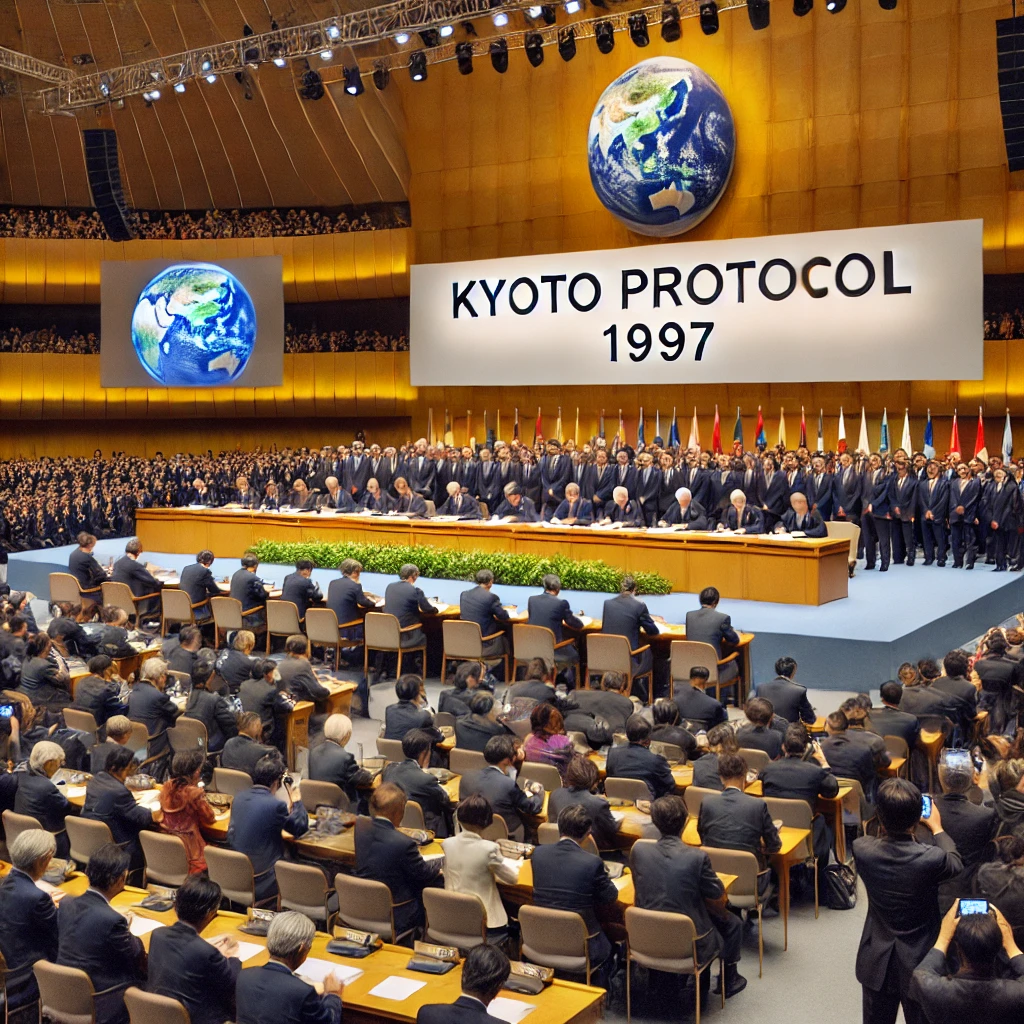On December 11, 1997, the Kyoto Protocol was adopted in Kyoto, Japan, marking a pivotal moment in global environmental policy. This international treaty set binding targets for industrialized countries to reduce greenhouse gas emissions, recognizing the urgent need to combat climate change. As the first global agreement of its kind, the Kyoto Protocol laid the foundation for future climate initiatives and underscored the necessity of international collaboration in addressing one of the planet’s most pressing challenges.

The Significance of the Kyoto Protocol
The Kyoto Protocol was groundbreaking because it established legally binding commitments for industrialized nations, requiring them to reduce their greenhouse gas emissions by an average of 5% below 1990 levels over a set commitment period. By focusing on developed countries, the treaty acknowledged their historical responsibility for the majority of emissions driving global warming. It also introduced mechanisms such as emissions trading, the Clean Development Mechanism (CDM), and Joint Implementation (JI), which allowed countries to meet their targets more flexibly while promoting sustainable development.
For the first time, nations collectively recognized the interconnected nature of climate challenges and the need for equitable solutions. The treaty signaled a shift in global priorities, emphasizing environmental sustainability alongside economic growth.

Challenges and Criticisms
Despite its significance, the Kyoto Protocol faced numerous challenges. Some major emitters, like the United States, did not ratify the treaty, citing concerns about its impact on economic competitiveness and the exclusion of developing nations from binding targets. Additionally, while the treaty succeeded in raising awareness and encouraging initial action, it struggled to achieve its full potential due to uneven implementation and limited participation.
Critics argued that the Protocol’s reliance on market-based mechanisms sometimes prioritized economic incentives over substantive emission reductions. Furthermore, rapidly industrializing nations, such as China and India, were not subject to binding targets, leading to debates over fairness and effectiveness.
The Legacy and Lasting Impact of the Kyoto Protocol

Despite its limitations, the Kyoto Protocol remains a cornerstone of international climate policy. It laid the groundwork for subsequent agreements, such as the Paris Agreement of 2015, which built on its principles while addressing its shortcomings. The Protocol’s emphasis on binding commitments and collaborative approaches set a precedent for how nations could work together to tackle global environmental issues.
The Kyoto Protocol also catalyzed technological innovation and investment in renewable energy, energy efficiency, and carbon-offset projects. The mechanisms introduced by the treaty, such as emissions trading, continue to influence contemporary climate policies and markets.
Today, the Protocol serves as a reminder of the importance of balancing ambition with inclusivity in global agreements. It highlighted the necessity of engaging both developed and developing nations in the fight against climate change, recognizing the shared but differentiated responsibilities of all countries.
By adopting the Kyoto Protocol in 1997, the global community took a historic step toward environmental stewardship. While the challenges of climate change remain immense, the treaty’s legacy endures as a symbol of what is possible when nations unite for a common cause.
